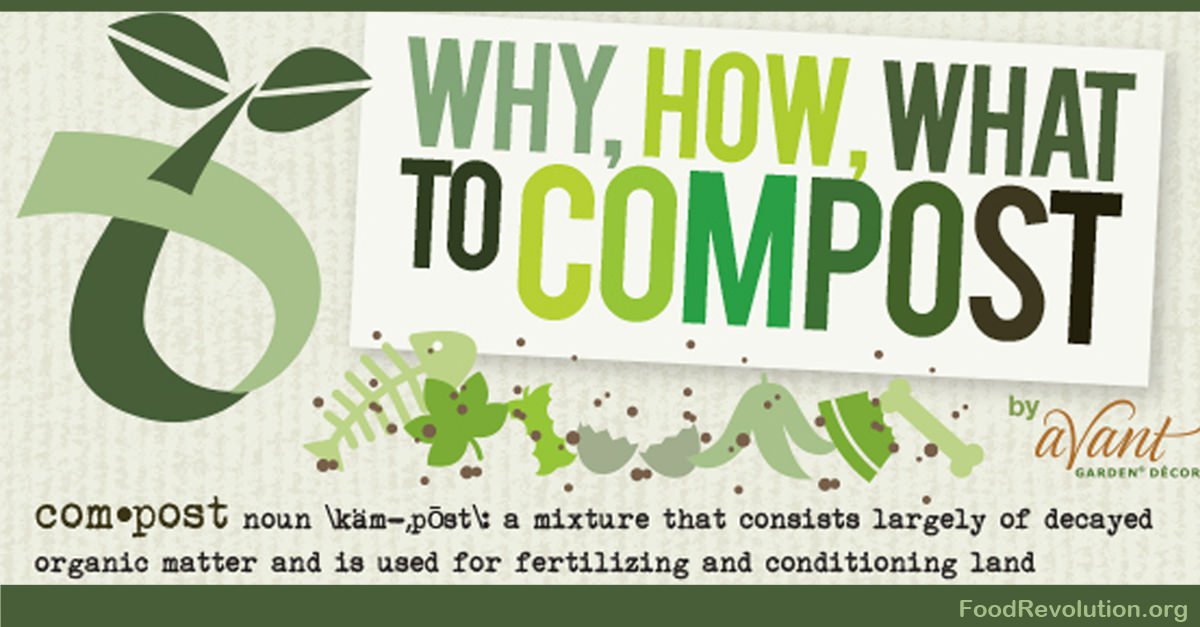Composting can seem daunting. But when you realize all the benefits of practicing this natural way of recycling, you’ll want to begin composting right away — and the infographic below can help you.
Composting reduces food waste, enriches soil, requires fewer chemical pesticides and fertilizers, lowers your carbon footprint, and saves you money. In addition, composting produces healthier plants and healthier foods with higher nutrient contents.
Compost is an organic material added to soil to help plants grow. By composting, you are returning nutrients back into the soil to continue the cycle of life.
Food scraps and yard waste make up 20 to 30 percent of what we throw away — so why not compost them instead? This way these materials are kept out of landfills, where they take up space and release methane, a greenhouse gas.
And if you want to practice organic gardening, consider this quote:
“Soil maintenance is at the heart of organic growing: don’t feed the plants, feed the soil — the plants will look after themselves. The extremely complex subject of soil maintenance can happily be summed up in one word: composting.”
While many people may worry about the look or smell of compost, guess what? Properly cared for compost doesn’t smell. And when it’s finished and ready to use, it looks like soil — dark brown and crumbly, with a smell like a forest floor.
Does knowing all this make you want to compost?
Infographic by Avant Garden Decor.
Should you compost with newspaper?
Paper is a natural material made from wood pulp, so it makes sense to use newspaper as composting material. But what about the inks used on newspapers? Are they toxic or safe? Should you be concerned about using newspapers as material for compost you want to use in your organic garden?
Today, most newspapers are made with soy-based black inks, which are better than the inks of the past, but, on the other hand, they are likely from genetically modified sources. Paper with color inks should definitely be avoided in compost, as the inks may contain harmful chemicals or pigments. And glossy paper, like magazines, should be avoided as well. Another thing to consider is that the newspaper bleaching process may also involve chlorine, whose breakdown process produces the highly toxic chemical dioxin.
Still, The Sierra Club’s Mr. Green says a study shows how paper contains less toxic material than straw or grass and is, therefore, safe to use — but he doesn’t link to the study, so we’re unable to see the full results. And others argue that the microorganisms in the composting process also break down the toxins, so you shouldn’t be too concerned.
So overall, it’s up to you what you want to add to your compost. To help you decide, I have one final point to consider:
Newspapers will add little to no nutrition to your compost, so why not use shredded leaves as brown, carbon-rich material instead and choose to recycle your newspaper?
What do you think?



